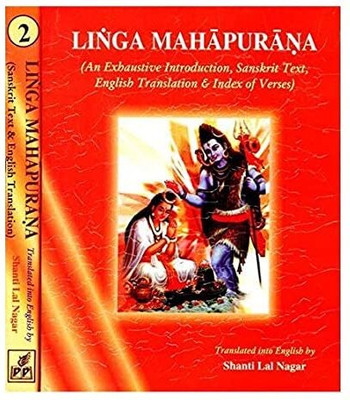Linga Mahapurana (2 Vols.) (An Exhaustive Introduction, Sanskrit Text, English Translation & Index Of Verses)(Hardcover, Translated by Shanti Lal Nagar)
Quick Overview
Product Price Comparison
Lord Siva is being worshipped in the country and abroad from time immemorial. Genesis of Siva worship can be traced in the Harappan culture as well, where he is believed to have been adored in the human as well as symbolic form. Nandin, his bull, too had immense importance at that stage of the Indian culture, where the bull is depicted over a large number of seals discovered from the Harappan sites of the stage of history. In fact, Siva is the great god, Mahadeva. He is the immortal Divine Principle who has entered the mortal beings. He is known as the Death-conquering Deity, Mrtyunjaya. The Great God is the eternal life-principle. He incarnates in matter and comes within the orbit of individual experience. He is unmanifest in his universal form, but manifest in each individual body whether of men, animals or plants. At each level of manifestation, the immortal and divine nature of the Great God is evident. He represents the predominant effect of existence and the mysterious force called Life or Prana.Mahadeva is named as Rudra and Siva in Indian tradition. He is identified with Agni or vice versa. Agni is stated to be of a double aspect, viz., Rudra in his terrible form and Siva in his auspicious form. Agni is called the immortal god. The Vedic thinkers expressed their concept of the Great God in a threefold formulation firstly, the Agni is Rudra; secondly, that Agni is the immortal principle among mortals; thirdly, that Agni is the life-principle called Praia within the mortal bodies. For example, it is stated in the Rgveda; ŌĆ£O Agni, you are Rudra.ŌĆØ In the Satapatha Brahmana, it is said ŌĆ£Who is Rudra, is the same as Agni.ŌĆØ In the Tandye Brahmana, we read ŌĆ£Rudra is AgniŌĆØ, and in the Taittiriya Brahmana, ŌĆ£That which is Agni is Rudra.ŌĆØ


